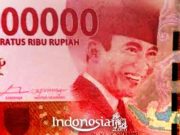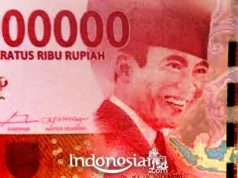In the Batak language, Huta Siallagan has the meaning, namely Siallagan Village. The name Siallagan itself is taken from the name of King Siallagan, the founder of this village. Interestingly, this village, which is located in Ambarita Village, Simanindo District, Samosir Regency, North Sumatra, is one of the favorite tourist destinations on Samosir Island.
Huta Siallagan is an ancient village that has existed for hundreds of years, and was built during the reign of the first Huta leader, King Laga Siallagan. Siallagan is a descendant of King Naimbaton who follows the line of King Isumbaon, the second son of the King of Batak.
The lineage of the lineage was then developed during the time of his heir, namely King Hendrik Siallagan. Next, go down to the descendants of King Ompu Batu Ginjang Siallagan. A number of descendants of King Siallagan still live there to this day in Ambarita Village, where the graves of their ancestors can still be found in the area.
Huta Siallagan itself has an area of about 2,400 square meters and is surrounded by stone walls 1.5 to 2 meters high. Constructed of slippery structured stones, the walls were once equipped with forts and sharp bamboos to protect the village from wild animals and attacks from other tribes.
When entering the village, one must pass through a gate with a statue and Batak script writing. You will find a row of traditional Batak houses that are neatly lined up.
In addition, there is also a collection of tables and chairs, or what is often referred to as the “Trial Stone”.
The location of the trial stone itself is in front of the king’s house, and right under the Hariara tree. A tree sacred to the Batak tribe. Tables and chairs made of stone are estimated to have been around 200 years old. Long time ago, this place was used to try criminals.
These crimes could include stealing, killing, raping, and being an enemy spy. The punishment was no joke. If the crime is minor, then a penalty will be given in the form of pasung. However, if the crime is classified as a serious crime, the perpetrator will be sentenced to beheading, aka beheading.
The execution date will also be determined from the criminal’s weakest day or when the good day is. The reason is, the average person who dares to commit crimes is believed to have black magic. To determine the day when to be executed, first used Manitiari or Primbon Batak Tribe.
After the day of beheading the perpetrator of the crime will be placed on a stone table with his eyes covered by the ulos cloth. Not only that, before the criminal suspect will be beheaded before being executed, he will be given a meal containing a shaman’s formula to weaken black magic.
Then, the offender will be beaten using a single stick, which is a magical wooden stick carved with images of human and animal heads, with long hair on the top.
Meanwhile, when executed, the criminals’ clothes will first be removed to ensure that no amulet remains. After that, all parts of the body will be cut into pieces. If you have been injured and bleeding, you can be sure that the black magic that usually makes people immune, has disappeared.
Do not stop there, if the body has been bleeding, it will be doused with acid water until the criminal gets weaker. After that, the beheading was carried out.
What makes it even more creepy is that after the execution process is complete, it is said that the heart and heart of the criminal will usually be eaten to increase the king’s strength. Meanwhile, the head that has been separated from the body will be placed on a round table, while the body will be placed on a square table.
The perpetrator’s body will be thrown into Lake Toba for seven days and seven nights. During that time, residents are prohibited from carrying out activities in the lake.
While his head will be placed in front of the entrance gate of Huta Siallagan as a warning to other kings or the people not to do the same thing. After rotting, the head will be thrown into the forest behind the village, and then residents will be prohibited from doing activities in the forest for 3 days.
This “sadistic” customary execution ended in the 19th century, when Christianity began to enter and was introduced by a German missionary, Ludwig Ingwer Nommensen.
Now, the beheading law and the story of the Batak tribe’s cannibalism are certainly no longer valid. This is the story of Huta Siallagan, a Tourism Village on Samosir Island which has now become a tourist village that must be visited while on Samosir Island. Come on, get interesting information and add insight from Indonesiar.com.
































